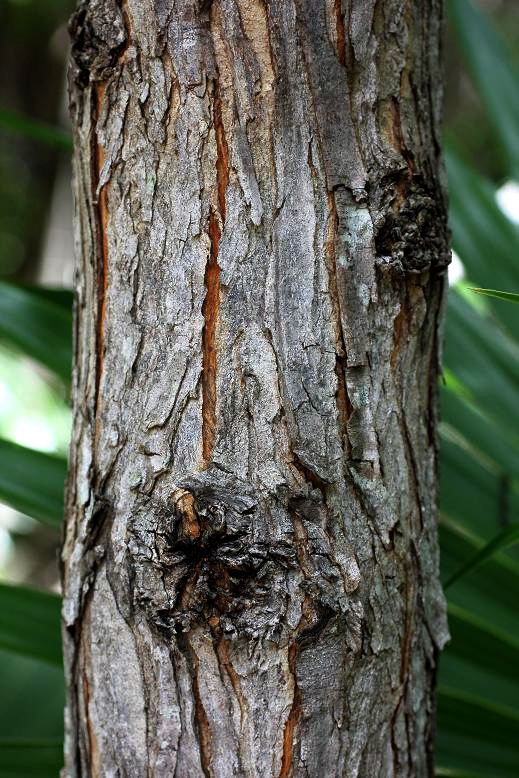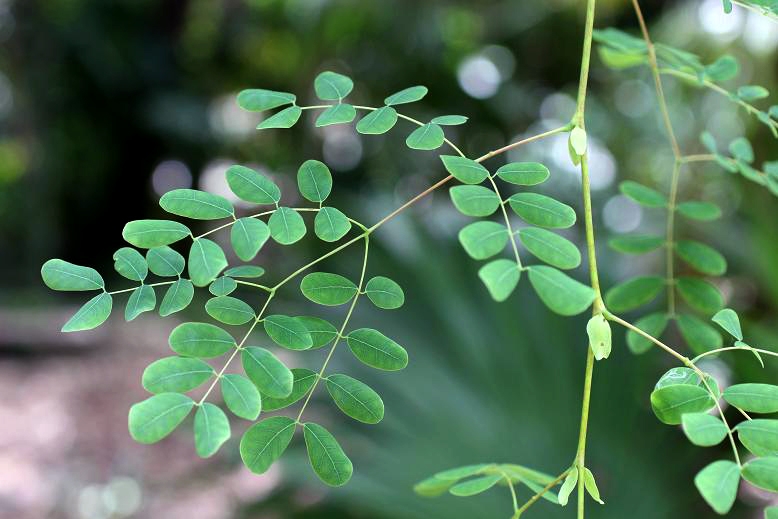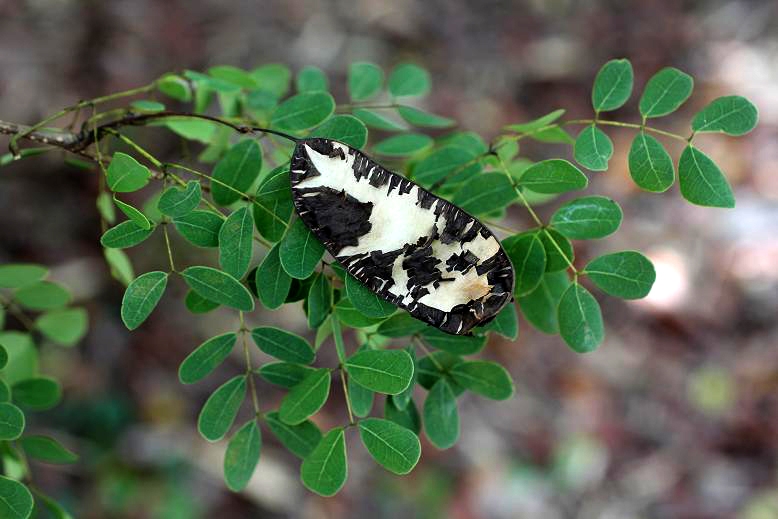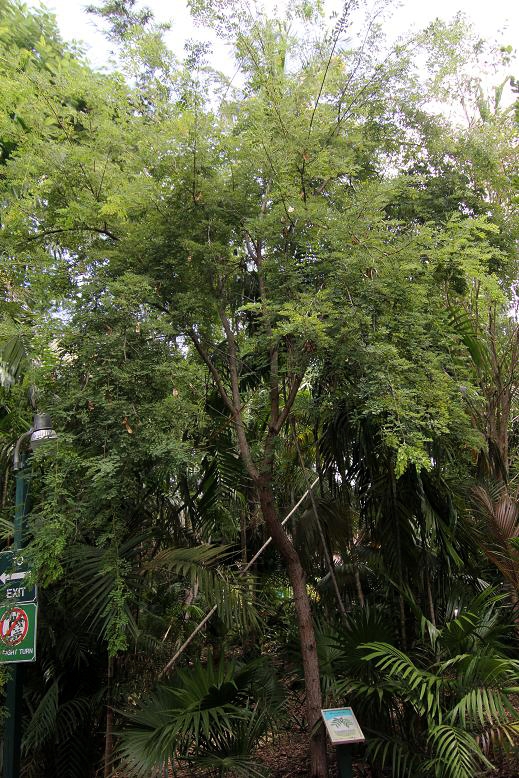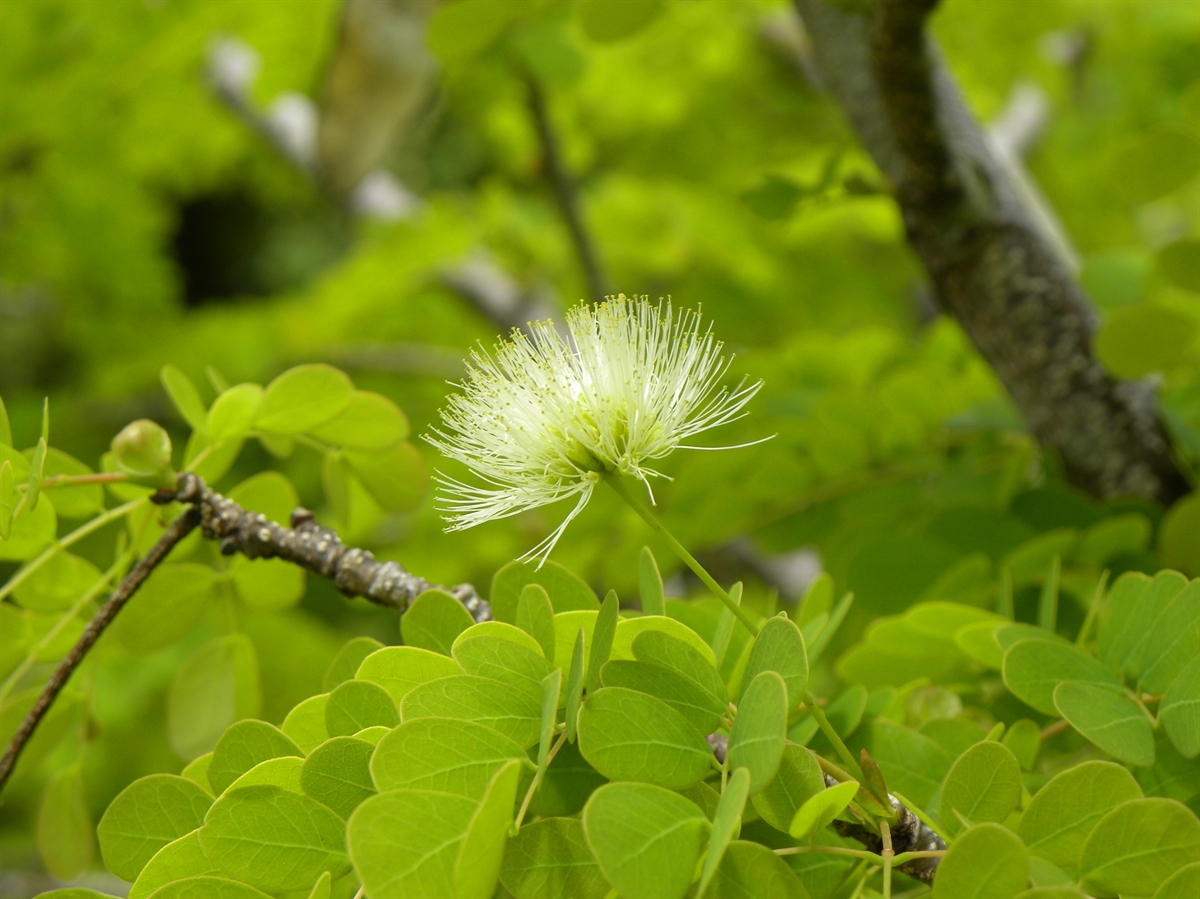Habit: Lysiloma sabicu grows a medium to large size tree up to 12 m in height. The bark is grey-brown and peels off in strips. When cut into the sapwood has a distinctive dark red color. The leaves are arranged alternately with stipules at the petiole base. The petioles have a small circular gland. The leaves are pinnately compound with 2-4 pairs of pinnae each with 3-7 pairs of leaflets. The leaflets are obovate in shape with an entire margin.
The complete, perfect, actinomorphic flowers are arranged in heads that arise from leaf axils. There are 5 fused petals in the corolla forming a tube that exceed the calyx. There are numerous, greenish-white, showy stamens that are 3-4 times as long as the perianth. The ovary is superior with a single locule. The fruit is a legume that becomes slightly revolute at maturity. Over time as the fruit ages the outer coating peels away so that the fruit is white and brown. The seeds are brown.
Habitat: Lysiloma sabicu grows in Dry Broadleaf Evergreen Formation – Forest/Shrublands (coppice).
Distribution: Lysiloma sabicu occurs in the central and northern islands of the Lucayan Archipelago as well as in Cuba, Hispaniola, and Jamaica. Is has also been found coming into areas of the Florida Keys.
Medicinal/Cultural/Economic usage: Lysiloma sabicu is not known to be used medicinally in the Lucayan Archipelago.
It is a sought after wood for carving, furniture, house trim, and has been used for boat building.
